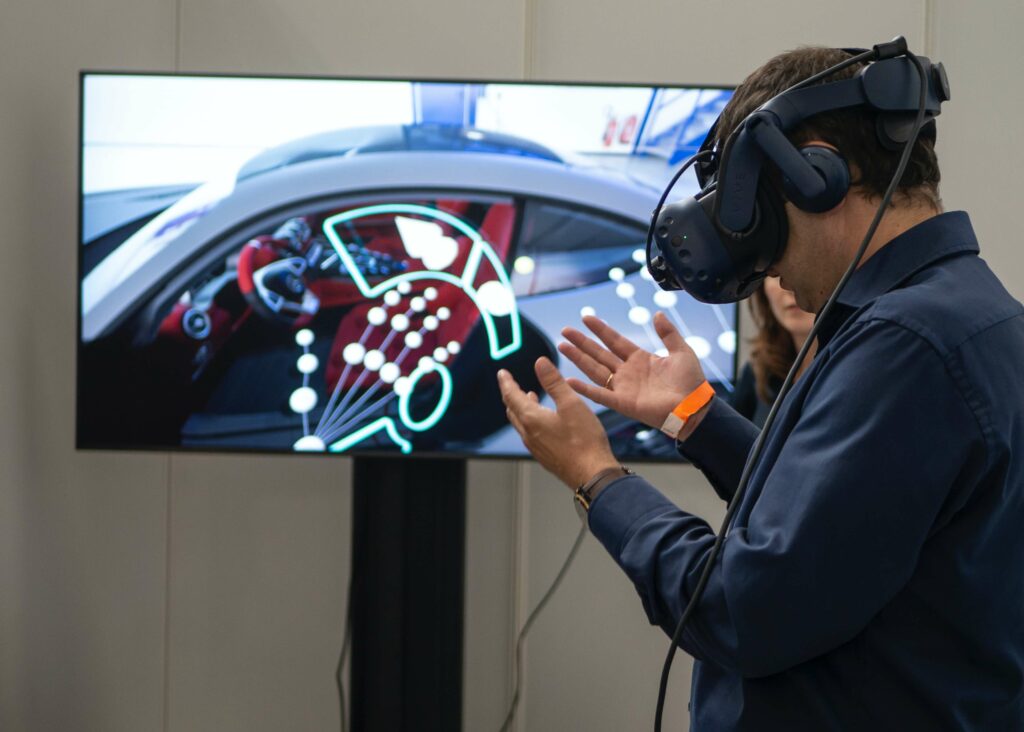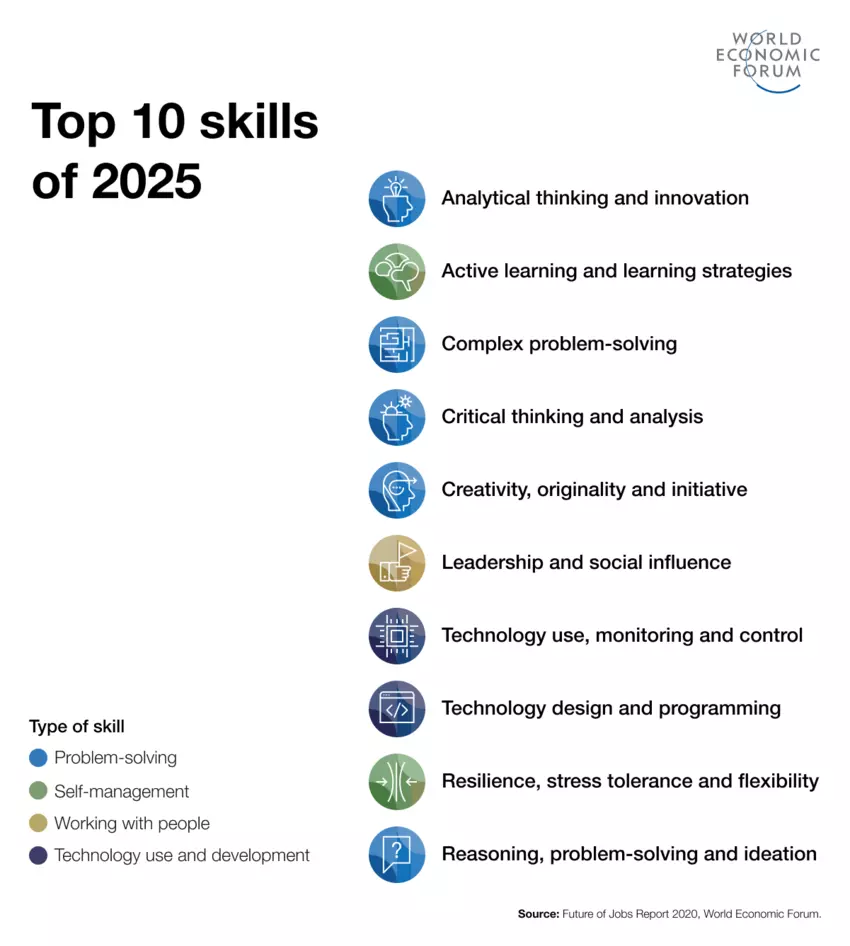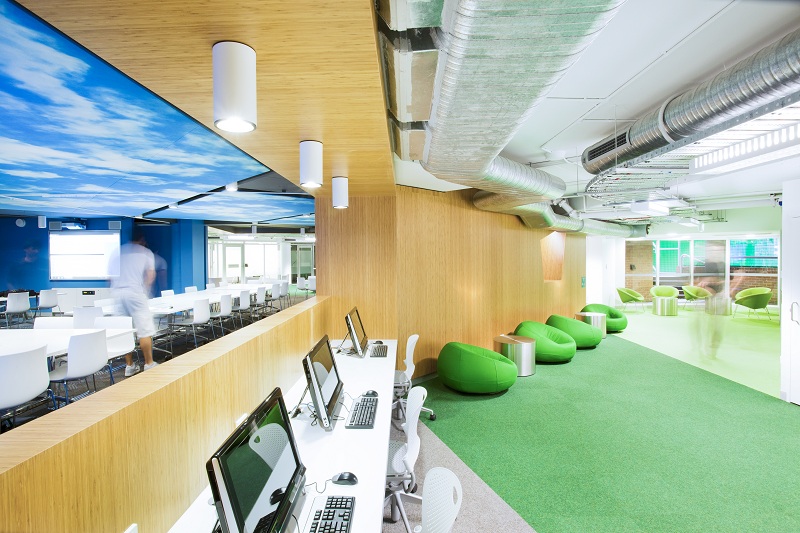The pace of change in the education sector has accelerated rapidly in the last two years, as it has for many industries. From early childhood education right through to workplace and professional training, there have been many new ideas and tools to turn them into realities.
Reflecting this, the value of the global EdTech industry is forecast to grow to over US$230 billion by 2028. Mobile technology, cloud services and immersive reality tools provide a vast world of opportunities to enhance learning, making it more accessible, interactive and modern for learners of all ages.
Here are five technology-backed learning trends that are already making a mark this year, and will continue to do so.
Learning analytics
The phrase “learning analytics” was coined in 2011. It refers to the measurement, collection, analysis and reporting of data about learners and their contexts, for purposes of understanding and optimizing learning and the environments in which it occurs.
Learning analytics can apply to learners and education environments of all ages. It takes tools from the world of business intelligence, such as customer or employee analysis using big data, and applies them to learners.
Reliable data analysis tools can assist educators in identifying trends and patterns among learners. Take for example Octopus BI, where you can unite your information systems, such as your learning management system, your administrative data, student or employee data, risk and compliance data, wellbeing data, historical data, student self-reporting data, and more. With Octopus BI, you can then process that information via data visualizations, graphs and charts, in order to get a full picture of trends and patterns affecting a student or a group of students across all these factors.
Learning analytics can also help education providers improve productivity, such as with onboarding new hires more quickly and thoroughly. With the data from other earlier onboardings guiding you as to which methods and material were successful and useful, and which proved to be more difficult, you can continuously refine your processes to be more beneficial both to the learner and the education provider, whether that’s a student in a school or a new hire in a company.
Learning should not be one-size-fits-all. With learning analytics, education providers can tailor their strategies and plans for individual courses or students based on what they know works, personalizing learning and training both efficiently and effectively. This will, in turn, engender stronger engagement, better retention, and a rewarding learning experience.
Lifelong learning

Traditional models of education apply to training children up to an appropriate age for when they are expected to join an industry suited to their skills. This education was always delivered in physical locations. Learning was traditionally conducted in the first fifteen to twenty years of a person’s life, and after that, any ‘learning’ was largely self-motivated skill development oriented around completing work tasks.
Today, we recognize that skills and competencies can quickly become outdated. Even the knowledge and skills people learn in school could be ‘wrong’ by the time they reach young adulthood – there may be easier or better ways to do them, or there is new knowledge available today that there wasn’t previously. Mentoring and coaching is also more widely available and encouraged for all industries, not only the highly motivated or ambitious.
Lifelong learning has become a vital part of career and business success, for individuals and companies alike. Online learning delivery services, both in the forms of formal university courses and more informal short-course learning help adults, both as employees and as people independent of the workplace, feel more in control and engaged in our ever-changing society.
Continuous learning throughout peoples’ lives encourages them to keep learning, thinking and improving day to day. Education doesn’t end at graduation. It never has, but society is only just starting to embrace the idea of continuous learning and what it takes to facilitate.
Immersive learning (extended reality)

With the multiplicity of devices available to learners of all ages today, from laptops to phones to VR glasses, there are many ways that educators can augment lessons with immersive, interactive material. “Extended reality” learning, which includes virtual reality (VR), augmented reality (AR) and mixed reality (MR), is a great way to grab and hold learners’ attention.
Imagine learning about ancient Greece while wandering around a digital reconstruction of it, or virtually visiting the Great Barrier Reef while learning about its ecology and threats, practicing public speaking in front of a virtual audience, or engaging in mixed reality lessons for repairing machinery in a factory – without having to actually travel to one and interrupt its operations. These and many more are the applications of immersive learning technology that are rapidly becoming available to learners in 2022.
As mentioned, one benefit of immersive technology is improved accessibility. Whether for learners in distant locations, or those with physical conditions, being able to join a digitally-enhanced, mixed-reality classroom puts everyone on a level playing field, often also with digital textbooks. It empowers all learners to put theory into action during lessons, improving engagement and comprehension, reducing risk in safe, controlled, supportive environments.
VR in EdTech, like the global EdTech industry, is predicted to grow rapidly over the next few years. As the Metaverse evolves and develops, and education providers explore the opportunities becoming available, the global VR EdTech market will grow to over US$13 billion by 2026.
Micro-learning or nano-learning (bite sized lessons)

Another trend in learning through 2022 and into 2023 will be the delivery of smaller, bite-sized lessons, called micro-learning or nano-learning. Where educational technology is concerned, this refers to learners being able to access short, easily-digestible lesson content exactly when and where they want to.
This rising trend is often attributed to the shortening of peoples’ attention spans and patience, and the many competing pressures and demands that people have on their time. If a learner only has twenty minutes before the kids get up, or an extra half hour after their lunch break, they should be able to access sufficient material to still progress on their learning journey.
Brief, focused lessons that center on one training or learning outcome can be beneficial to both an educator and a learner, eliminating wandering attention, time wasting, and irrelevant material. Minimizing the length and complexity of individual training sessions can also help learners retain information more effectively, especially when they are supported by regular quizzes and practical immersive exercises.
For examples of micro-course delivery, look at Coursera, or Udemy, or Duolingo, where learners are able to self-manage content delivery, with ‘micro-courses’ available ranging from an hour to several weeks or months long. Shorter learning sessions over a longer period of time helps encourage continuous engagement, learning and retention, while the flexibility and rich media materials enable learners to learn when and how is best for them.
Soft skills training

The last trend we’re going to look at today is the importance of schools and organizations recognizing the opportunities in teaching students and employees ‘soft skills’.
‘Hard skills’ generally refers to practical, technical, task-based skills, such as computer coding, writing and grammar, and analytics and mathematics. They are specific, quantifiable, measurable abilities and techniques required for school and jobs.
Soft skills, meanwhile, are typically personal or social in nature. They are often referred to as ‘traits’, which makes them seem like something a student or employee must inherently possess (i.e. that a person is ‘born’ creative). But in truth, these qualities are frequently very teachable, and more and more schools and organizations are becoming interested in teaching them, and measuring students’ progress in learning and applying them.
Critical thinking, problem-solving, creativity, emotional intelligence, collaboration, adaptability and ‘grit’, and more, are all soft skills that have been recognized as critical for modern society. These and other ‘soft skills’ are known to be excellent attributes for employees and managers, making the people who work hard to learn them and master them excellent candidates for any role, especially in leadership.
Where to next for the EdTech industry?

Globally, both education providers and EdTech providers are coming to terms with our ‘new normal’ working and learning environments. While many would prefer the world to go back to the way it was in 2019, we must accept that some things have changed irrevocably. Technology should, and can be, an excellent tool in helping to manage change and seek improvement for the future of learning.
As our CRO Trevor Furness recently wrote, many education providers at all levels are discussing the future of digital and classroom-based learning. They want to know whether to retrofit their current education operations, bolting on new technology and trends of the 2020s, or go for a total systems refresh.
Ultimately, there are so many potential opportunities to leverage for education providers in 2023, and it can be overwhelming to know where to start. With data as your guide as to what works and what doesn’t within the contexts of your own environment, you can start to identify your priorities from these trends that will best help to push the needle within your school or company.




